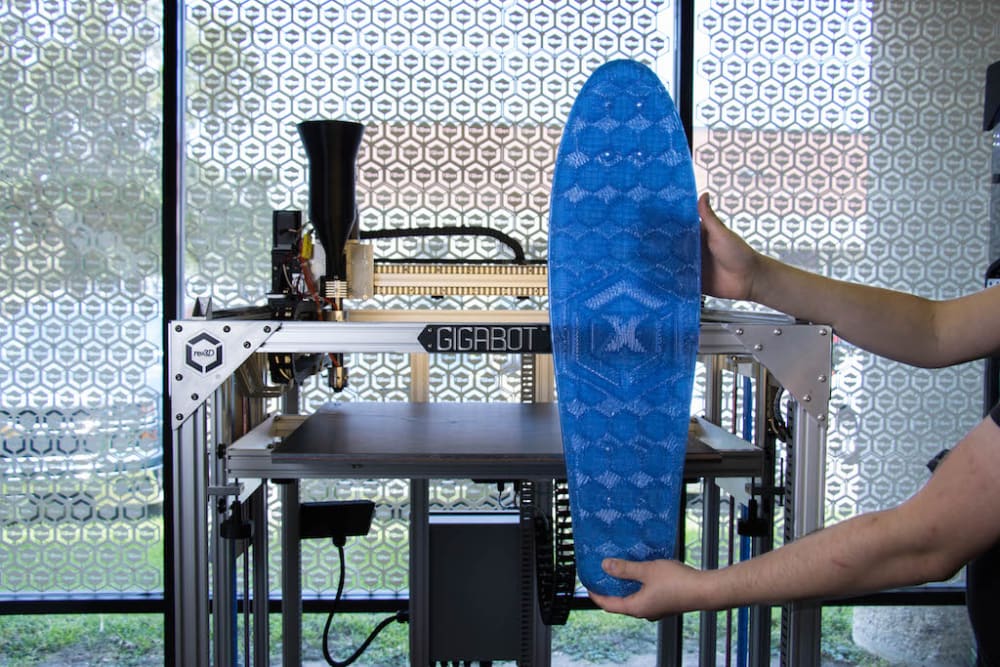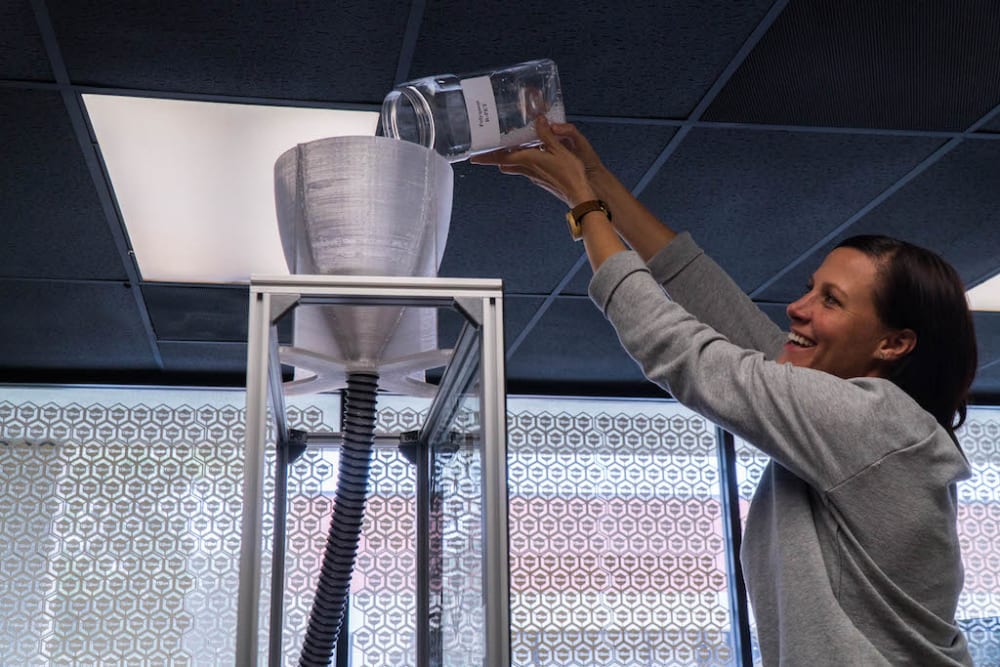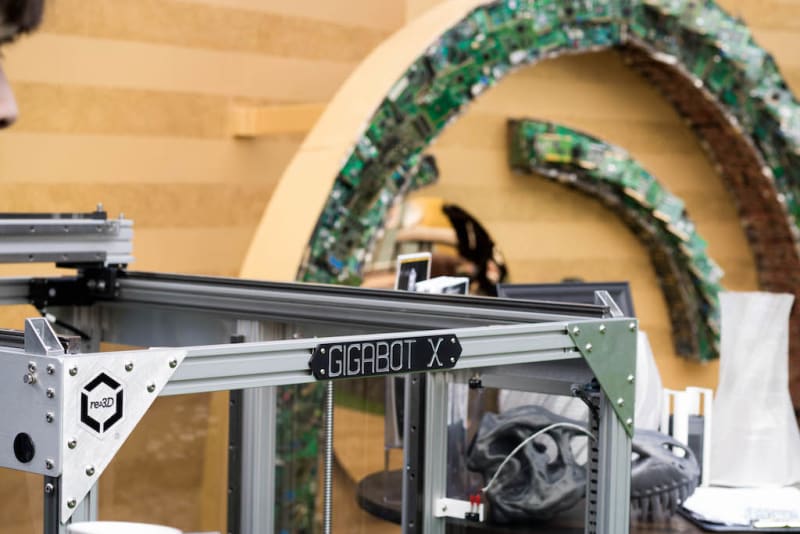
Plastic waste pollution is an increasingly prevalent environmental issue around the world. Many companies produce plastic waste through their manufacturing processes, and remote or resource-limited environments - isolated island populations, natural disaster locations, theaters of war, and more - continuously bring in plastic products that end up as waste.. Individuals in these remote environments also face the challenge of acquiring manufactured tools and resources. Although additive manufacturing technologies unlock the potential for users to solve complex problems and create insular supply chains, they continue to suffer from barriers such as cost, accessibility, and sustainability.
Gigabot X is an industrial scale, Cartesian-style 3D printer manufactured in Houston, Texas that prints using polymer pellets, flakes, or recycled regrind, allowing it to revive recycled waste for use in an array of applications. The extruder on Gigabot X is a modular system comprising three heating zones, an extrusion barrel, a hardened steel screw, and a nozzle that can be changed to meet different resolutions. Our current design of Gigabot X boasts a build volume of 5.8 cubic feet, and the modularity of the extruder body allows for installation on larger printer frames or adaptation to other fabrication machines. Depending on the material, Gigabot X can print anywhere from 6.5-20 times faster than the traditional filament printer, and tensile testing shows that Gigabot X does not degrade the polymer’s mechanical properties when compared to traditional filament printing. A single Gigabot X pellet printer has the potential to repurpose 30,000 water bottles per month into functional products. Furthermore, local manufacturing with Gigabot X simplifies supply chain management and reduces emissions from transportation and waste removal.
Gigabot X’s ability to print with both recycled plastic regrind and pellets also provides significant cost savings over traditional 3D printing filament. Almost all plastics/polymers - including 3D printing filaments - begin their life as pellets. Removing the manufacturing step of converting pellets into filament results in virgin or recycled pellets being an order of magnitude cheaper than filament. Printing directly from shredded waste plastic can further decrease the cost of raw material. Gigabot X also has the ability to allow custom additives or materials mixing to manipulate the properties of printed parts.
When compared to the entire 3D printing market, pellet printing currently represents a relatively small piece of the pie . However, the pellet printing market is essentially untapped from the perspective of affordability and attainability for most end-users. At re:3D, we believe that breaking the cost, scale, and speed barriers with pellet printing technology will result in a quick adoption of pellet printing into the broader 3D printing market, especially the industrial sector, where it can lend a second life to manufacturing waste and create a circular economy.. The price of a fully-assembled Gigabot X printer is $20,000, making it an affordable option on the spectrum of pellet printers currently ranging from $12k to $72k.
Video
-
Awards
-
 2019 Top 100 Entries
2019 Top 100 Entries
Like this entry?
-
About the Entrant
- Name:Mitch Long
- Type of entry:teamTeam members:Morgan Hamel
Kara Butler
Aubrey Woern
Samantha Reeve
Samantha Snabes
Matthew Fiedler
Jeric Bautista
Helen Little
Michael Strong
Mike Battaglia
Mitch Long - Patent status:none








